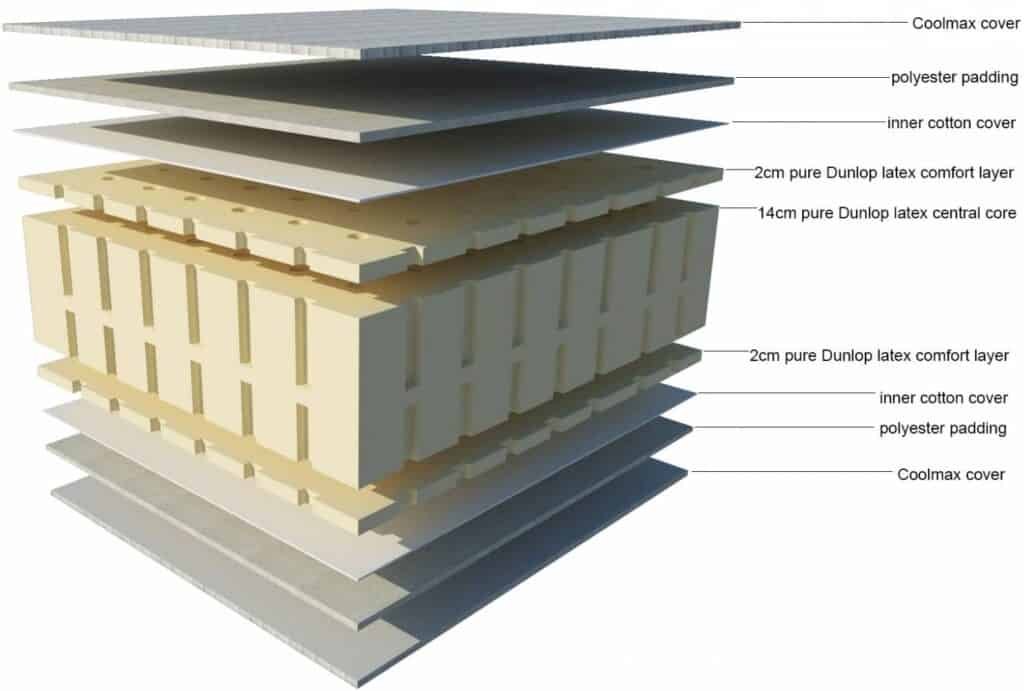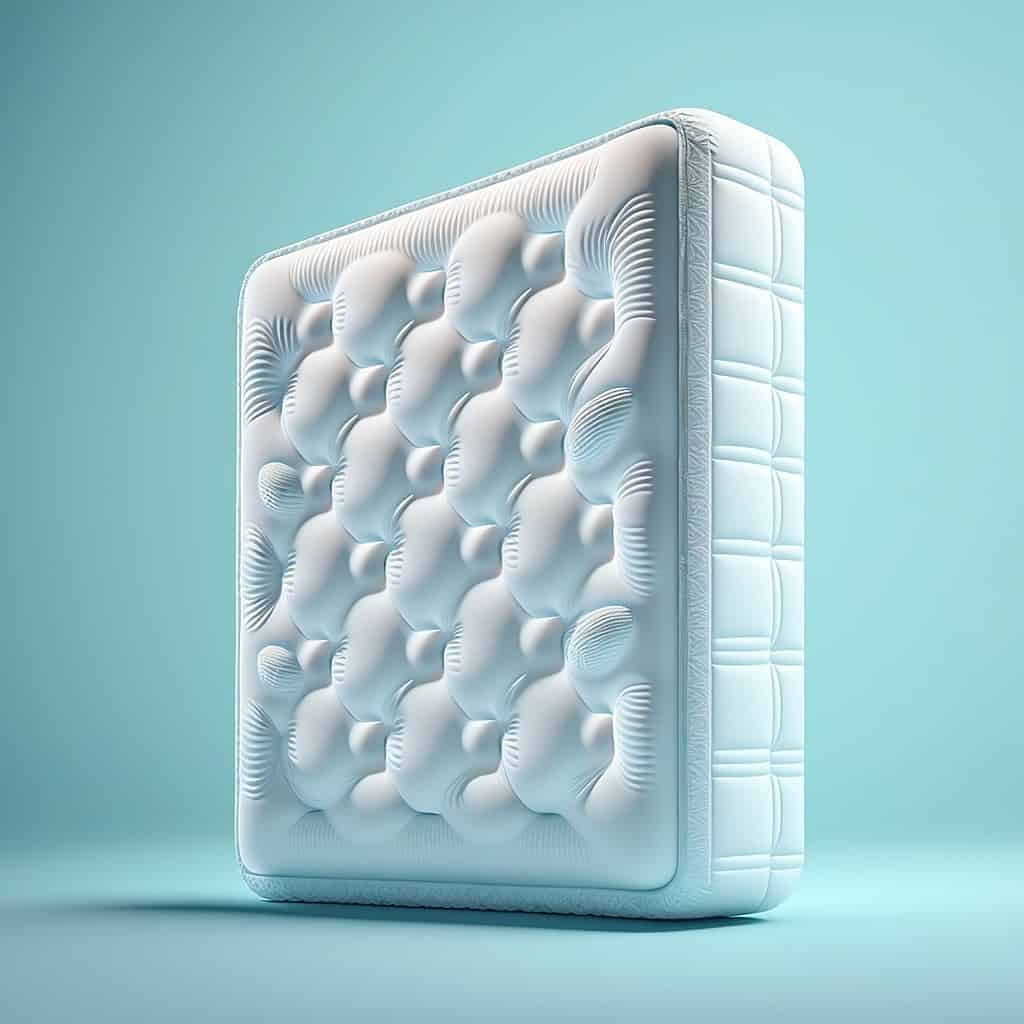What Should I Look for in A Mattress?
Selecting the ideal mattress is vital for ensuring a good night’s rest. However, with the myriad available options, navigating the market and making an informed decision can take time and effort. The key is understanding that mattresses cater to diverse preferences and body types, meaning the choice is deeply personal and depends on individual needs. Choosing a mattress involves considering various factors, such as the material, firmness, and the particular sleep issues one might face. With products like Emma and Simba offering different benefits, it’s important to assess and compare to find the option that will provide the best support and comfort.
Key Takeaways
- A suitable mattress choice is crucial for sleep quality and requires careful consideration of personal comfort and support needs.
- Mattress firmness and material are significant factors; options like memory foam and innerspring cater to different preferences.
- It’s essential to address specific sleep concerns when selecting a mattress, ensuring it aligns with individual requirements.
Indicators It’s Time for a Mattress Upgrade
- Persistent Discomfort: Those who wake with aches, particularly in the back, might be due to a mattress change.
- Improved Sleep Elsewhere: Noticing better rest in beds other than their own could signal the need for a new mattress.
- Age Factor: Generally, mattresses have a lifespan of 7-10 years, though this depends on individual use and mattress material.
- Latex Longevity: Latex mattresses are noted for maintaining their structure for up to 15 years, surpassing many others in durability.
Mattress Varieties to Contemplate
The array of options varies when selecting a mattress, but some key types stand out for their particular benefits and construction.
- Sprung Mattresses: These provide a traditional and firm feel, featuring coiled springs within their structure. They usually suit those who sleep on their fronts or backs, aiding in keeping the spine’s natural alignment. To maximise their up to seven-year lifespan, rotate and flip them twice a year.
- Memory Foam Mattresses: Acclaimed for their pressure-relieving qualities, these mattresses mould to the contours of one’s body, offering a sensation akin to being cradled. They cater to any preferred sleeping position and can serve for a decade with periodic rotation.
- Latex Mattresses: For a cooler sleep experience, latex mattresses are preferable due to their breathable material. Their spongy and buoyant nature prevents you from sinking in like memory foam, promoting better airflow. These are exceptionally long-lasting, often reaching fifteen years with careful maintenance.
- Hybrid Mattresses: Combining different materials, such as foam and pocket springs, these mattresses balance support, breathability, and motion isolation. They also offer enhanced edge support, making them ideal for those sharing a bed. With proper care, their lifespan can extend from eight to ten years.
- Polyurethane Foam: Offering a balance between memory and latex foam, polyurethane foam layers can be either plush top layers or a dense, supportive foundation. They generally provide moderate contouring when compared to other foam types.
Important Characteristics to Consider:
- Durability: Look for longer-lasting materials like latex that are known for their resilience.
- Support: Pocket springs and coils offer targeted support, helping to distribute weight evenly.
- Cooling Properties: For hot sleepers, materials like latex foam with natural breathability and cooling technologies are beneficial.
- Motion Isolation: Hybrids often excel in limiting movement transfer, contributing to undisturbed sleep.
- Edge Support: Hybrid mattresses are often reinforced at the edges, which can help prevent sagging and provide a larger usable sleeping surface.
Understanding Mattress Firmness
Firmness is a crucial factor when selecting a mattress. Choices range from soft to firm, accommodating various sleeping styles. For example:
- Back sleepers may find a medium-firm mattress offers the optimal balance, maintaining proper spine alignment and preventing back pain.
- Side sleepers benefit from a soft to medium level of firmness, which helps with spine alignment and eases pressure on shoulders and hips.
- Stomach sleepers generally need a firm mattress to support pressure points and maintain comfort adequately.
- Combination sleepers, who shift between positions, are well-served by a medium firmness mattress.
Hotels often choose medium or medium-firm mattresses because they cater to various guest preferences. When buying a mattress, considering your dominant sleeping position can lead to making an informed choice for a more comfortable rest.
Sleep Concerns
When selecting a mattress, it’s essential to consider both the material and your specific requirements for a restful night’s sleep. Various factors, from your sleeping position to personal preferences, influence the choice of a mattress.
- Temperature Regulation: Individuals who tend to sleep hot might prefer a mattress with cooling properties. Look for materials that promote airflow, such as innerspring or hybrid designs that combine coils with foam. Additionally, options integrating cooling technologies, including gels or metals like copper, can help keep temperatures down.
- Motion Transfer: Choosing a mattress that limits movement transfer can be critical for those sharing a bed. Foam mattresses absorb motion excellently, ensuring a restless partner doesn’t disrupt sleep.
- Edge Durability: Adequate support at the edges of a mattress can be an essential consideration, particularly for side sleepers or those who frequently sit on the bed’s perimeter. Some designs offer reinforced edges for increased durability and support.
- Mattress Depth: Heavier mattresses often provide a plush and sumptuous feel, which may cater to a premium sleeping experience. On the other hand, thinner mattresses offer cost savings and easier installation.
- Size of Mattress: The dimensions of the mattress you choose should match your spatial requirements during sleep and fit within your bedroom. Common sizes available include single, double, king, and super king, catering to different spaces and personal needs.
Selecting a mattress that offers adequate support is paramount for those dealing with back pain. For side and back sleepers alike, mattresses that contour to the body can alleviate pressure points, offering relief and comfort. Furthermore, individuals with allergies should consider hypoallergenic materials that reduce the likelihood of allergy triggers.
Selecting the Ideal Mattress
When choosing a mattress, personal preference reigns supreme. Individuals should consider comfort and the type of sleepers in their household. A visit to a retailer allows for an in-person assessment to find the perfect match.
- Mattress Size: Match to your bed frame for a snug fit.
- Budget: Options exist for every cost bracket.
- Comfort Level: In-store testing is beneficial.
- Investment: Quality equals a better night’s sleep. Avoid overly cheap solutions.
Commonly Asked Queries
What Considerations for Mattress Firmness?
When determining a mattress’s ideal firmness, one should consider body weight and preferred sleep position. Generally:
- Lighter individuals may opt for a softer mattress.
- A firmer surface better suits heavier individuals.
- Sleep position impacts this choice, too, with stomach sleepers needing firmer options and side sleepers needing softer mattresses for shoulder and hip cushioning.
How do you select a mattress for back pain relief?
To find a mattress that mitigates back pain:
- Seek out medium-firm mattresses that provide both support and comfort.
- Verify that it delivers consistent spinal alignment.
- Look for materials like memory foam or latex that conform to your body while supporting the lower back.
What are the Traits of a Superior Mattress?
High-quality mattresses are characterised by:
- Durability—materials that maintain form and structure over time.
- Support—consistent spinal alignment without excessive sinking.
- Comfort—top layers provide cushioning for pressure points.
What Recommendations for Side Sleepers?
Side sleepers should consider mattresses that offer:
- Soft to medium firmness—to relieve pressure on shoulders and hips.
- Construction that supports body contours, like memory foam or cushioned pocket coils.
How Do Your Sleep Habits Impact Mattress Selection?
Personal sleep inclinations can dictate the mattress choice:
- Temperature preferences—gel-infused or breathable materials that regulate heat.
- Movement isolation—if sharing a bed, materials that minimise motion transfer.
- Sleep positions—affects the level of firmness required.



